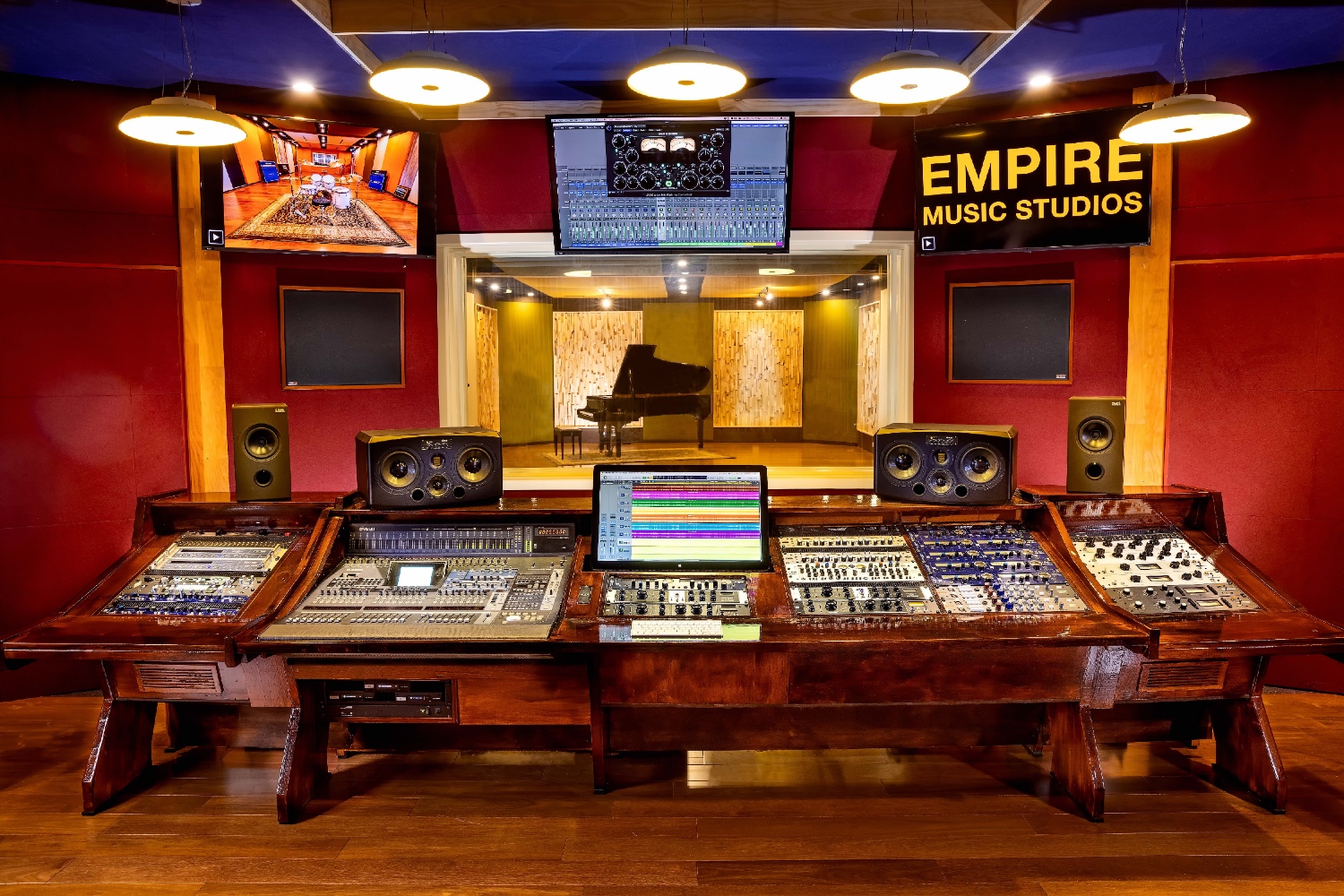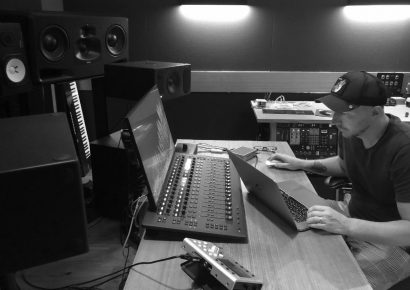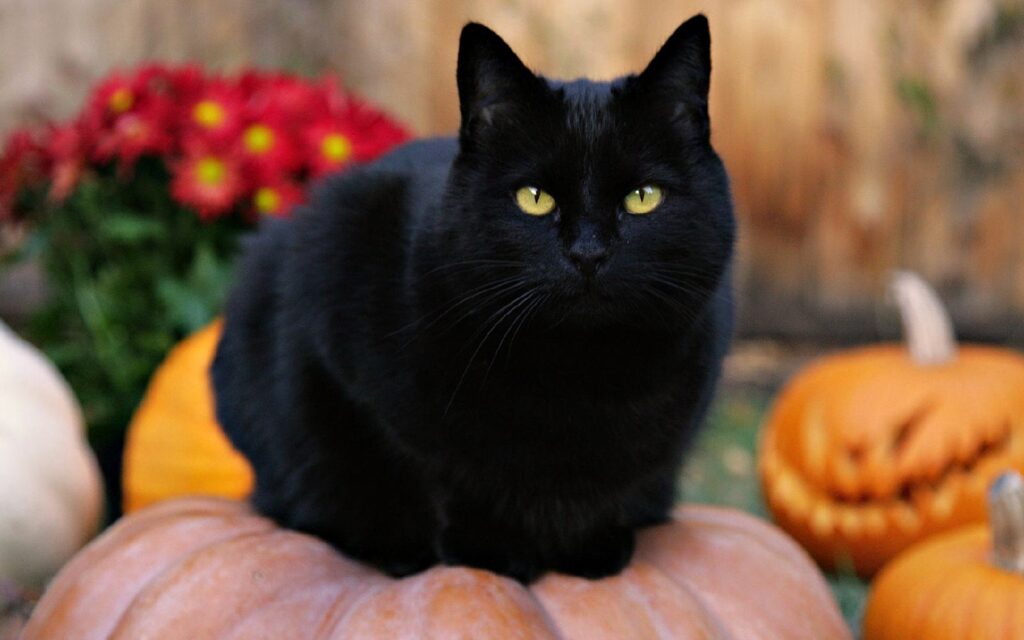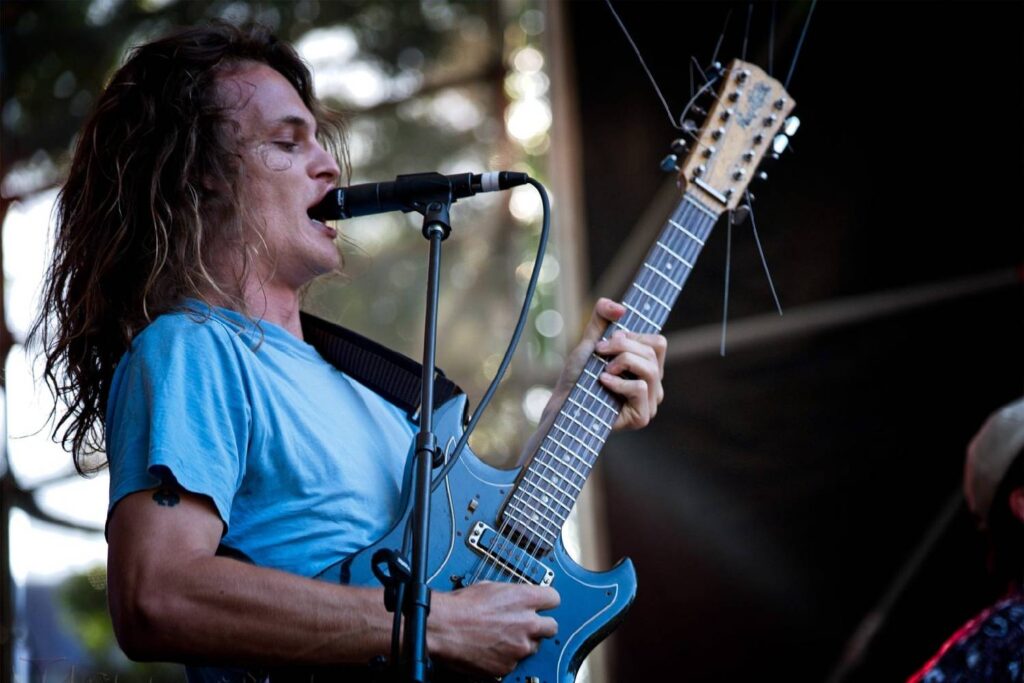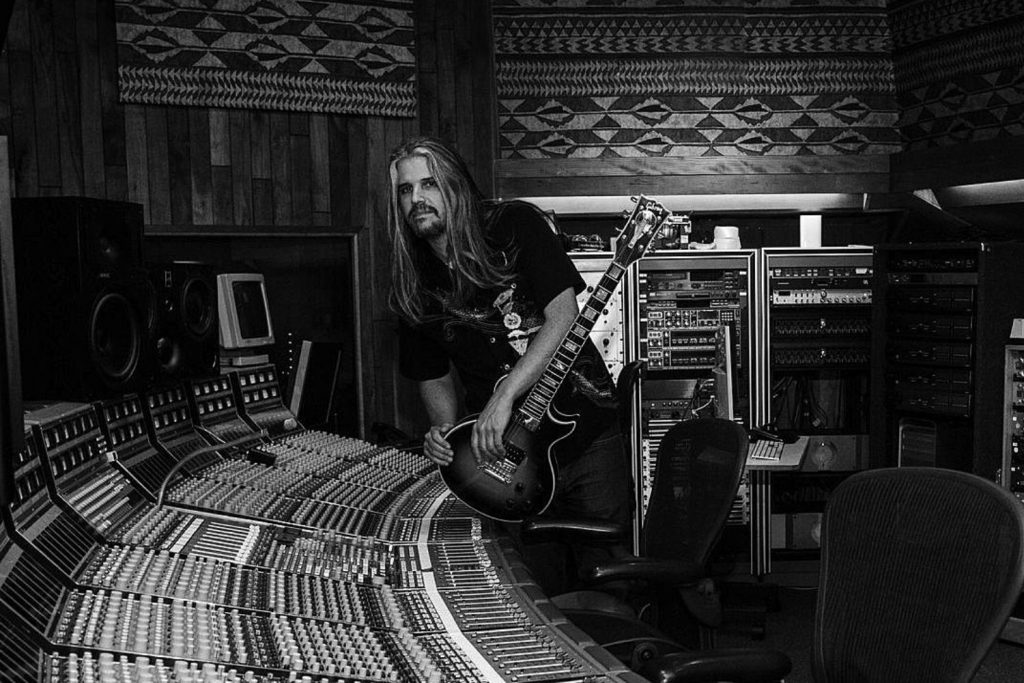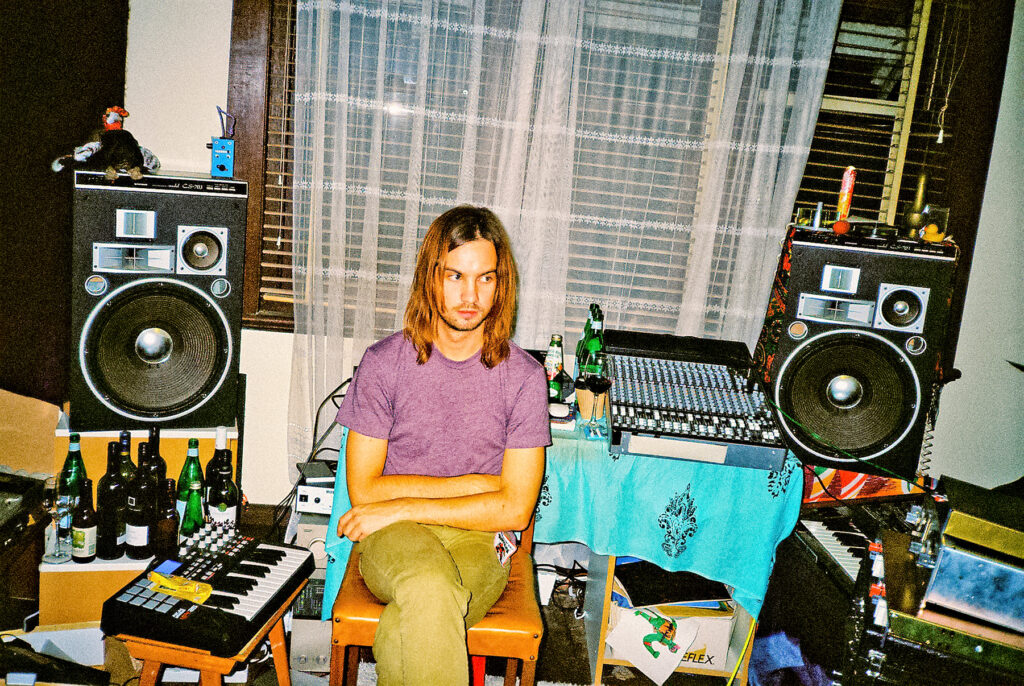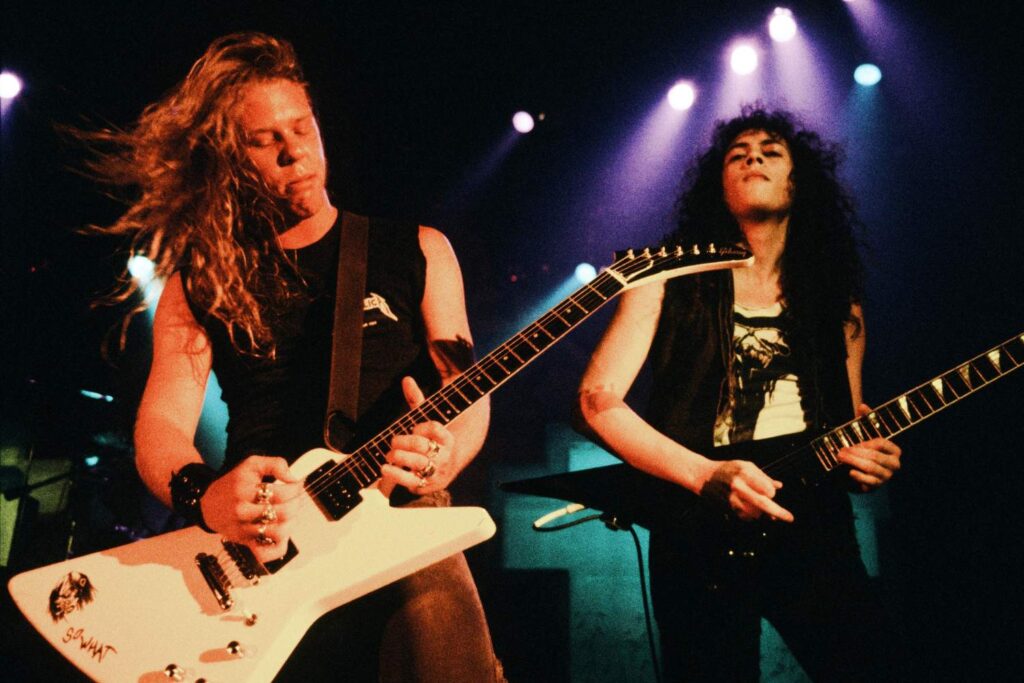We catch up with Paul Higgins to chat the legacy of Studio 52, Kool Skools and Empire's new Heidelberg headquarters.
Essentially Melbourne’s answer to Sydney’s iconic Studios 301, the story of Empire Music Studios stretches all the way back to the ‘80s, where it was originally founded as Studio 52.
Now based in Heidelberg, Empire looks to continue their rich legacy with some of the best recording rooms in Victoria, offering up a creative hub for musicians from all walks of life.
To find out more about Empire Music Studios, we spoke with studio manager Paul Higgins for a comprehensive overview of what they’ve got to offer.
Never miss an update – sign up to our newsletter for all the latest news, reviews, features and giveaways.
Give us a brief history of Studio 52: who has been involved with the studio over the years, and how has it transformed into what Empire Music Studios is today?
Studio 52 spent almost 34 years at Johnston St, Collingwood until the building was earmarked by developers and demolished to make way for new apartments. The original co-songwriters and business partners, Trevor Carter and Paul Higgins, are still working together and head up the new Empire Music Studios facility.
Paul and Trevor met in 1983 and became songwriters, the original studio was meant to further that endeavor but soon became overtaken with the commercial realities of running a business. Before long they were doing albums and singles for the growing indie market.
They saw the need to provide assistance to many bands who were starting out so they began doing Sampler projects, over the next ten years they recorded and released around 400 hundred bands on projects like 52 Pickup, The Nu-Music Sampler 1-13, Real Australian Blues Vol.1-4, Fear of the Unknown and a metal compilation called While My Guitar Gently Kills Your Mother.
These bands would often come back and record further singles and albums with the studio after getting some initial exposure and airplay from the samplers.
When our tenancy of the Collingwood studios was coming to an end it was really a choice between getting out, starting again with a small boutique studio or going bigger and better. We really wanted to continue the work with Kool Skools so that forced our hand to build a bigger, new and amazing multiple studio creative hub.
We also thought that there were no large recording studios left as Sing Sing had closed in Richmond so as a point of difference we would build large spaces including Studio A designed for orchestral size projects.
View this post on Instagram
The studio is now based in Heidelberg after spending nearly 35 years in Collingwood. How are you finding the new location? What do your neighbours think?
We are so happy to have left Collingwood and the miserable council, City of Yarra who never supported us in the entire time we were there. Now we have unlimited free parking, and have worked with a supportive Council, Banyule who are actually helping an arts community to grow, not just claiming the Arts mantle by default. Now Collingwood has an Arts Precinct but few artists can afford to live anywhere near it.
We have been so lucky here, we have been given so much support from local businesses and in the process have also been able to build using a lot of recycled timber and donated materials. It’s also been great to be surrounded by some of our key building and acoustic material suppliers.
View this post on Instagram
Who works at Empire Music Studios today? Can you introduce us to some of the engineers and producers who inhabit your studios?
Trevor Carter is still the head engineer and the main producer, he has so much experience and so much expertise across all kinds or music and recording methods having made hundreds of records. There is no musical genre that he has not worked with, probably no instrument that he hasn’t recorded, he has even recorded vocals in many different languages.
He started out as a drummer and guitarist following bands like Led Zeppelin and Black Sabbath but today is regularly doing pop, RnB and hip-hop. He taught songwriting at Collarts and works with many songwriters helping to write and arrange new songs. He is also an expert when it comes to mixing and mastering. Despite coming from a tape and analogue background, he now loves and adopts everything digital in combination with the best mics and valve preamps.
View this post on Instagram
One of our other regular engineers is Mat Robbins who has a long history of working in top studios. He did a lot of work at Collingwood and is keen to work more at Heidelberg. Obviously with COVID-19 last year, we didn’t get to do much or promote the new studios, but we are now open and meeting with engineers and producers from all studios, we are keen to work with a lot of new people involved in all aspects of musical production.
We are offering dry hires of the studio and want to develop relationships with people we can trust. We are also keen to meet up with more photographers, video makers and graphic artists. Currently Stan Traianedes is our main photographer in-house, he is great for music work and also for fashion shoots.
There’s an amazing space at the new studio that includes three recording rooms as well as production suites, a photography room and events space. Can you tell us a bit about the three different recording rooms? Who are they suitable for?
Studio 1 is the smaller of the three main studios but still has a separate drum booth so you do a full five-piece band without any trouble. It’s often used for vocal production, pop, RnB and hip-hop, but is great for a three-to-four piece jazz group as well.
Studio 2 has a larger record are of 85sqm and is perfect for just about any multi piece band and great acoustics for jazz. Our main Yamaha C7 is in Studio 2, so it has already attracted some top jazz pianists who say it is the best piano in Melbourne – John Mcall even stated that it was possibly better than one in a New York studio he recorded in.
So far we have done a lot of jazz and community groups in the space but we are just as keen to see some heavier rock come through as well.
Studio A, which is still being completed, will be Melbourne’s premier space for orchestral, choir or large ensemble recording. The studio is due for completion within the next three or four months. It is likely to house a nine foot Yamaha Grand along with a special Baldwin ex-pianola upright grand piano that is around 100 years old.
There is also the Production Suite and Photo/Art/Video area which are available to everyone as well. The production room is also a fabulous writing room. Lastly there is a 80sqm office which is available to rent, we are looking for a complementary music or arts business to partner with us in this space.
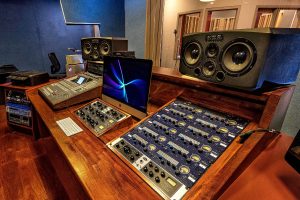
The control room at Studio 1.
I’ve heard that the acoustic isolation at the new recording studios is second to none, with some even saying that it’s among the best in the country. What’s the secret to the sound reinforcement you’re using?
We are surrounded by factories and trucks a bit like Studios 301 in Sydney – luckily, we’re a bit further from the flight path and airport though.
We took over a large factory space of 1250sqm so the first thing we needed to do was sound-proof the steel roof and quieten the whole building, we used a lot of materials from Autex Australia, including the acoustic blanket that is used for aircraft hangers and large factories.
View this post on Instagram
We then brought in 2 x 40’ containers of high-grade 80kg density Rockwool from China. That has been used to float the floors of each studio and in all the walls for soundproofing.
We also used bought 52 pallets of cement cladding tiles on 2 semi trailers from Sydney. We have used the tiles as a further extreme deadening and soundproofing part of the structure along with the usual “room within room” and lots of air gaps which are standard methods of studio construction and sound separation between multiple studios in the one building.
Finally, we have used an enormous amount of Autex acoustic materials including the 15, 25 and 50mm acoustic wall covering and coloured wall materials that are made in Melbourne. We also made all of our own diffusers on site and used a lot of recycled timber and off cut wood in those as well.
What kind of gear do you have set up at Empire Music Studios? Is there any particular piece of equipment or musical instrument that you’re really proud of, or that you tend to use more than any other?
We claim that we were the first commercial studio to invent or implement a “Frankenstein Console” rather than using the usual SSL or Neve board. We looked at how everyone was working and realised that these consoles were rarely being used, everyone is keen to work quickly, in the DAW and using a variety of preamps rather than just the channels of one desk.
We also wanted the computer screen to be front and centre in the stereo spectrum as that is the focus of 90% of the work these days. We assembled a mixed pallet of solid state and valve preamps along with some outboard gear all as part of the desk surface with a digital mixer just for headphone mixes and usual functions like levels and talkback.
This has been a huge success for us and anyone who works with us understands it very quickly, there are almost no patchbays and this means it has an extremely clean signal path from Microphone to preamp to converter.
View this post on Instagram
Like everyone, we have our favourite brands that we use and recommend. These include RME, Mogami, Universal Audio, Focusrite, TLA Classic Series, Warm Audio, ADAM, Klark Teknik, QSC, Yamaha, Wertheim, Kemper, Audio-Technica, SE Electronics, Rupert Neve and more.
One of the units we have a lot of are the TLA PA-1 dual Pentode Mic Preamps, you can’t get them anymore but we have gathered around 13 of these, they are just clean and warm with great character because of the Pentode valves. We have a collection now of around 150 top microphones so everything is covered.
Empire also offers a number of production suites for artists to hire on a long-term permanent or semi-permanent hired basis. What can we expect from these spaces, and how much does it cost to hire one for personal use?
We are looking for permanent and semi permanent tenants for these suites. Currently they can be booked for around $300 or $400 per day but we are more keen to follow the model of Studios 301 in Sydney by having multiple suites run by individual producers who work in with the main business but bring in their own clients and share use of the bigger studios occasionally.
We also have a photography suite that we are looking to sublet in the same manner with someone who can also work with our clients from time to time.
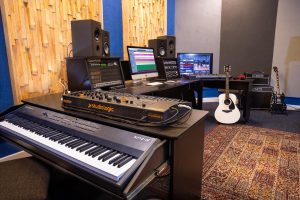
One of the Production Suites at Empire Music Studios.
Empire Music Studios is also heavily affiliated with the Kool Skools initiative – tell us a bit about your involvement with that.
The constant desire to work with new artists and to help in playing that first role of introducing people to the industry then led the studio to go one step closer to the source by starting what has been the most important project of all, Kool Skools.
This gave the studio the chance to work with around 300-400 teenage acts each year doing original music all around Australia. 2021 is now the 25th year of the Kool Skools Project and a complete rebuild after the project was cancelled in 2020 due to COVID restrictions.
The project has had an astounding impact on the industry, helping to launch dozens of important ongoing artists including big names like Delta Goodrem, Missy Higgins, Casey Donovan, Axle Whitehead, The Cat Empire, Anthony Callea, The White Room, Marc Collis, Dean Geyer, Natasha Duarte, kelebek, Jordie Lane, Amaya Laucirica, Melody Moon and so many others in and around the industry.
Kool Skools works with secondary schools and youth councils encouraging teenagers to write songs and to form bands or groups at school which then come to Empire Music Studios to record. The kids get treated just the same way as any professional muso and get access to the best musical instruments and latest recording technology.
Generally, they come for a two day project and take over the whole building including the photography studio to do all the artwork for an album of songs recorded. Multiple acts get to record simultaneously throughout the different studios, now with the three studios we can record a whole album in a day.
Coming to a major studio is such a great experience for young songwriters as it is so inspiring. Kool Skools is all about the professional experience and hopes to encourage young people to follow musical vocations. It is never a competition, we are open to all genres and kids at all levels.
We really want to give everyone access to the arts and the ability to record in a top line studio. Many schools have small studios now so they have even more reason to come and work with professionals.
Finally, how can we get in touch with you to book studio time, or keep up to date with what’s going on at the studio?
Paul Higgins is the main contact for all bookings at this stage. Please call 0412-686-252 or email [email protected]
You can also keep up to date with the studio’s new Instagram, Facebook page and the website, which will soon be replaced with an all new comprehensive site at empiremusicstudios.com.au. We also have a YouTube channel, which you can check out here.
View this post on Instagram
Head to the Empire Music Studios website and book a session today.
